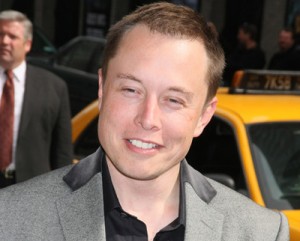Shortly after traders finished the day, Tesla Motors revealed another loss for the fourth quarter of 2012 – but the electric vehicle maker also said it now expects to be “slightly profitable” during the first three months of this year, well ahead of its earlier forecast of clawing into the black by “late 2013.”
The maker has been ramping up production of its first relatively mainstream battery-car, the Model S, after a slow start and won at least a partial victory, just before the earnings announcement, as the New York Times conceded it may have fallen short in a critical review of the Model S.
In a federal filing, Tesla revealed it lost $89.9 million during the October to December period, an increase of just over 10% compared to the year-earlier loss of $81.5 million. Revenue, however, increased from $39.4 million to $306.3 million as Tesla finally ramped up production of the new battery sedan. For the full year, Tesla lost $396.2 million on revenue of $413.3 million. It lost $254.4 million the year before on $204.2 million in revenue.
In a statement to shareholders, Founder and CEO Elon Musk declared, “2012 was indeed the Year of Model S. This year, we are on a journey to expand the presence of Model S and turn profitable.”
Further increases in production – along with a broad expansion of the markets in which the Model S is available – should help, Musk stated, along with a concurrent reduction in capital needs now that the California-based start-ups plant near San Francisco is fully tooled up. Tesla experienced unexpected delays after the launch of the Model S last July but claims it is now assembling them at an annual pace of around 20,000 – with further increases planned.
That has helped boost margins, which Musk said reached 8% during the final quarter of 2012, while forecasting they could reach 25% by the end of 2013.
The Model S was a critical piece of that improvement though Tesla also pointed to other sources of revenues, such as the $12 million it took in during the fourth quarter for its part in a partnership with Mercedes-Benz to develop a new B-segment electric vehicle.
Tesla also has a partnership going with Toyota, from whom it bought its plant in Fremont, California. Toyota recently launched the new RAV4-EV, an electric crossover using a Tesla drivetrain, and the two makers are working together on the development of a battery-powered sports car.
This could be a particularly telling year for Tesla as it also is coming up on the launch of its second mainstream model, the Model X crossover, which it unveiled last summer.
But despite the positive spin of Musk’s letter to shareholders – which was co-signed by Chief Financial Officer Deepak Ahuja – the future isn’t entirely rosy.
The “future appears bright, but 2013 looks to be choppy,” cautions a new report by Deutsche Bank’s. Opening new markets in Europe and Asia, and adding the Model X “has potential to drive significant growth,” but the analysis questions Tesla’s ability to reach its optimistic margins targets.
There will clearly be costs involved in expanding both production and distribution, as well as in setting up the fast-charge network that Tesla has dubbed Superchargers. Establishing that system – which will initially concentrate on EV-centric markets on the East and West Coasts – could be critical to winning over consumers worried about range so-called anxiety, even with Tesla largest Model S battery pack. But the initial charging stations now in operation reveal that this won’t be quick or easy.
Tesla was slammed in a review by New York Times reporter John Broder who wrote of having to have a test vehicle flatbedded when it ran out of power short of a Supercharger station during a run from Washington, D.C. to Boston. That triggered a noisy he-said/she-said debate between the paper and Tesla CEO Musk who quickly declared the story a “fake.”
(NY Times Admits Mistakes But Insists Tesla Also Deserves Blame. Click Here for the latest on this story.)
As TheDetroitBureau.com today reports, the Times has acknowledged flaws in its review – but is also accusing Tesla of making mistakes. Other news outlets have boosted Tesla’s case by successfully completing the drive – albeit by following strict guidelines on how and where to drive. It remains to be seen if the brouhaha will turn public sentiment for or against Tesla.
However, analyst Jim Hall, of 2953 Analytics thinks the maker will do just fine, suggesting that there is a waiting list “10-deep” for the Model S. The question is whether demand will remain strong after the initial crop of battery car enthusiasts take delivery. That will determine whether the promised modest profit will be foretell a bright future or simply serve as a brief reprieve.


Optimism is great as long as you can deliver. In the worldwide economic meltdown only those with excessive incomes are likely to be buying Tesla toys.